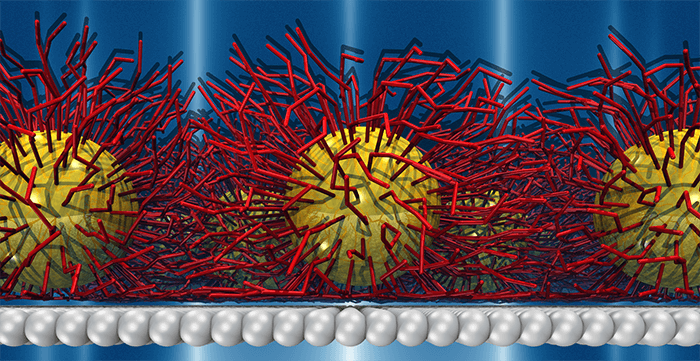
Data courtesy of: Subramanian Sankaranarayanan, Argonne National Laboratory
The NIU School of Art and Design faculty have created an innovative new course in data visualization which will debut this coming fall. The course will empower students to make sense of, interpret, communicate, and use the unprecedented amount of information made available to them through modern technology, such as phones, the internet and even wearable devices.
Joseph Insley, visualization and analysis team lead at Argonne National Laboratory and an NIU alum of the School of Art and Design’s Time Arts Program, will teach Special Problems in VisCom: Data Visualization and Topics in Art: Data Visualization.
Insley is collaborating with Michael Papka, associate professor of computer science, on the design of the course. Papka has been teaching a similar course on data visualization for the past five years in the computer science department. This new course will differ in that it will be tailored toward students without a background in computer science, so there will be less programming, more design and use of commodity tools, making it accessible to students of all backgrounds.
While the concept of using images to understand data has been around for centuries (e.g., maps, graphs and charts), technology has greatly accelerated its use. Today, data visualization is an increasingly used tool for science, engineering, the social sciences, media studies and art for effective communication of complex ideas, explained John Siblik, director of the NIU School of Art and Design.
Siblik said its universal application and appeal is why students from across the university will find the content to be applicable to their paths of study or future careers in fields such as visual design, illustration, editing, engineering, publishing and the sciences.
“Data is the new currency, and having the ability to visually explain data in clear and simple terms can be applied to almost any career path,” he said, adding that the class topics will focus on the aesthetics, correctness, and summarization of data in the context of insight and communication.
Insley explained that data visualization is important not only because it helps people to process and understand large amounts of data and research, but it also can help them to identify trends and possibly improve processes.
“Effective, clear communication is essential in the fast-paced world of today,” Siblik said. “Gone are the days of thoughtless and cluttered, blindly generated charts and graphs. The next generation workforce will need a new set of tools and skills to clearly and effectively present material (data); present it in a truthful and easily understood manner.”
